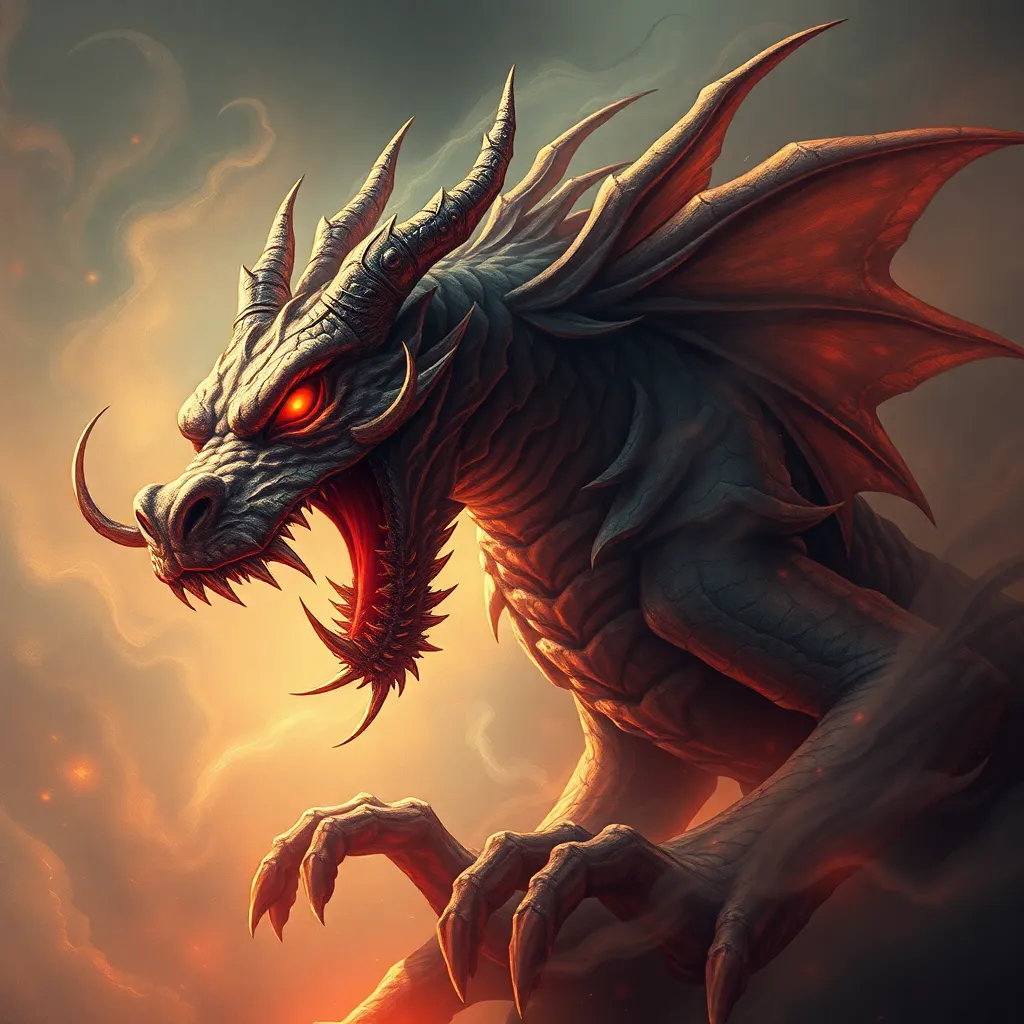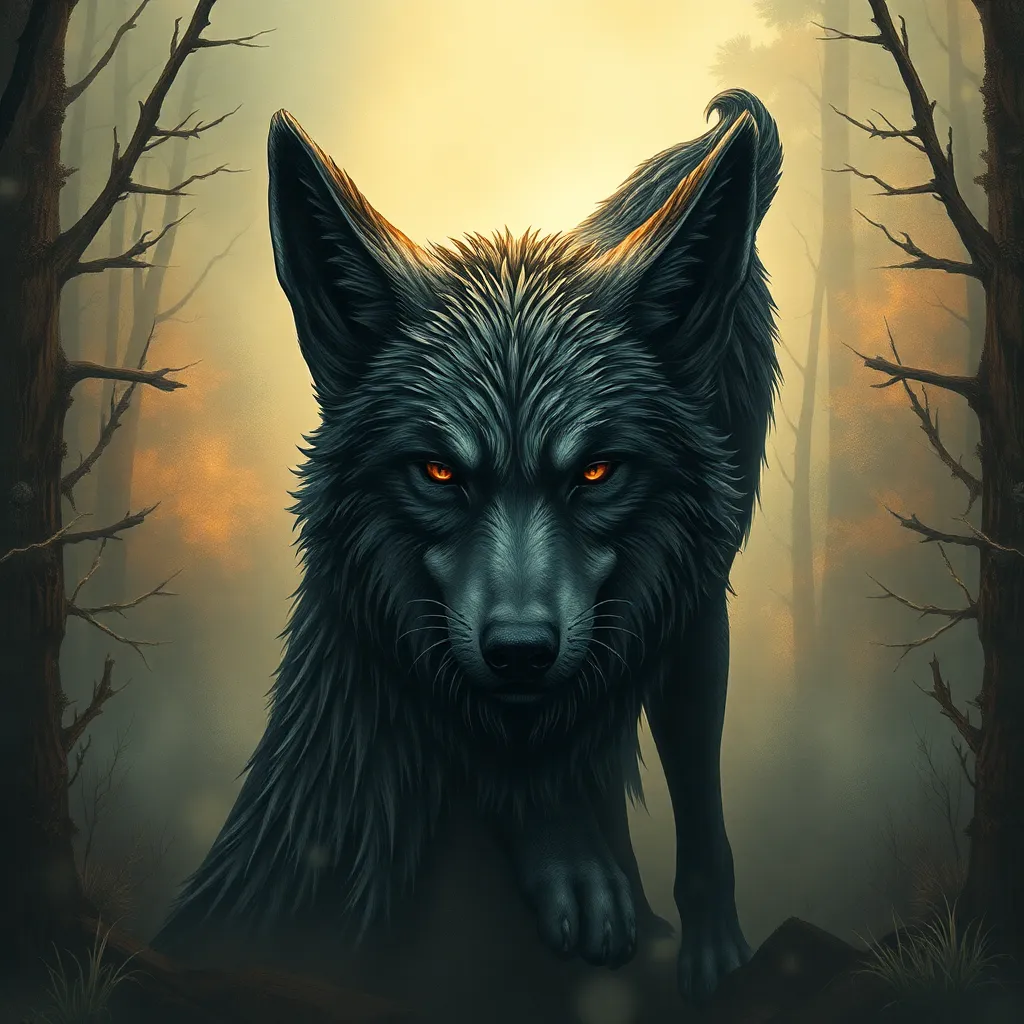The Manticore’s Bite: Exploring the Persian Legend
I. Introduction
The Manticore is a fascinating creature rooted deeply in Persian mythology, often depicted as a fearsome beast with a lion’s body, a human head, and a scorpion’s tail. This mythical being has captured the imaginations of many and is notable for its unique characteristics and terrifying nature. The significance of the Manticore’s bite in folklore extends beyond mere physical harm; it symbolizes danger, destruction, and the unknown. This article aims to explore the origins, characteristics, and cultural impact of the Manticore, particularly focusing on the implications of its bite within the broader context of Persian legends.
II. Origins of the Manticore Legend
To understand the Manticore, one must delve into the historical context of Persian mythology. The Manticore is believed to have originated from ancient texts and oral traditions that predate modern storytelling. Its earliest references can be traced back to the ancient Persian Empire, where it was mentioned in various works of literature and historical accounts.
In the works of Herodotus and other classical historians, the Manticore was described as a creature that inhabited the lands of Persia, instilling fear in the hearts of those who encountered it. Over time, the legend has evolved, adapting to the cultural and societal changes throughout history while maintaining its core elements of terror and intrigue.
III. Description of the Manticore
The Manticore is often described in vivid detail, characterized by its:
- Lion’s body: Symbolizing strength and majesty.
- Human head: Representing intelligence and cunning.
- Scorpion tail: Indicating danger and the ability to inflict lethal consequences.
These features are laden with symbolism. The lion’s body conveys power, while the human head suggests a blend of animalistic ferocity with human intellect. The scorpion tail serves as a reminder of the hidden dangers lurking beneath the surface.
Throughout art and literature, the Manticore has been interpreted in various ways. In Persian miniatures and manuscripts, it is often depicted as a formidable creature, instilling awe and fear. Writers and poets have also drawn upon the Manticore to symbolize deeper themes of human experience and nature’s duality.
IV. The Manticore’s Bite: Mythical Significance
The bite of the Manticore is not just a physical assault; it embodies a range of mythical significances. The nature of the bite is often described as venomous and debilitating, leading to death or madness. This reflects the broader themes of peril that are prevalent in many myths.
Allegorically, the Manticore’s bite can be seen as a representation of:
- The dangers of unchecked ambition: Just as the Manticore is a blend of various formidable creatures, it symbolizes the potential for destruction when humanity’s desires go awry.
- Fear of the unknown: The bite serves as a metaphor for the unforeseen consequences of venturing into uncharted territories.
- Destruction and chaos: The act of being bitten signifies a loss of control, leading to chaos in one’s life.
Thus, the Manticore stands as a potent metaphor for danger and destruction in both personal and societal contexts.
V. The Manticore in Persian Culture
The Manticore’s presence in Persian culture is profound, with its role prominently featured in literature and poetry. Persian poets have utilized the Manticore as a symbol in their works, often to illustrate moral lessons or the complexities of the human condition.
Moreover, the Manticore has influenced Persian art and storytelling, appearing in various forms of creative expression, including:
- Miniature paintings that depict epic battles between heroes and the Manticore.
- Folktales that incorporate the Manticore as a cautionary figure, warning of the perils of hubris.
- Modern adaptations in contemporary Persian narratives that explore its mythical attributes.
In modern Persian culture, the Manticore continues to be a source of inspiration and fascination, reflecting the enduring legacy of this mythical creature.
VI. Comparisons with Other Mythical Creatures
The Manticore shares similarities with various monsters found in Greek and Roman mythology, such as the Chimera and the Sphinx. These creatures, like the Manticore, are hybrids that embody multiple attributes, often representing chaos and the unknown.
In relation to Western folklore, the Manticore can be compared to other hybrid beings, such as:
- The Griffin (a lion and eagle combination).
- The Minotaur (a human and bull hybrid).
- The Basilisk (a serpent with lethal powers).
Cross-cultural interpretations of hybrid creatures often highlight the universal themes of fear, danger, and the struggle between humanity and the primal forces of nature, as seen in the Manticore’s legend.
VII. The Manticore’s Legacy Today
In contemporary media, the Manticore has found a new life, appearing in films, books, and video games. Its enduring fascination can be attributed to its rich mythological background and the symbolic meanings associated with it. Some notable examples include:
- Fantasy novels that feature Manticores as formidable adversaries.
- Films that depict mythical creatures, often drawing inspiration from Persian legends.
- Video games where players encounter Manticore-like beasts as part of their quests.
The Manticore’s legacy continues to resonate with audiences, reflecting the timeless nature of myth and the human fascination with the monstrous and the unknown.
VIII. Conclusion
In summary, the Manticore is a multifaceted creature that embodies the complexities of Persian mythology. From its origins in ancient texts to its symbolic representation of danger and destruction, the Manticore’s bite holds significant mythical importance. The impact of the Manticore in literature, art, and modern storytelling demonstrates its enduring legacy and relevance.
As we reflect on the Manticore’s bite and its implications, we invite readers to explore further into the rich tapestry of Persian legends and myths, discovering the myriad of stories that continue to shape our understanding of the world.



